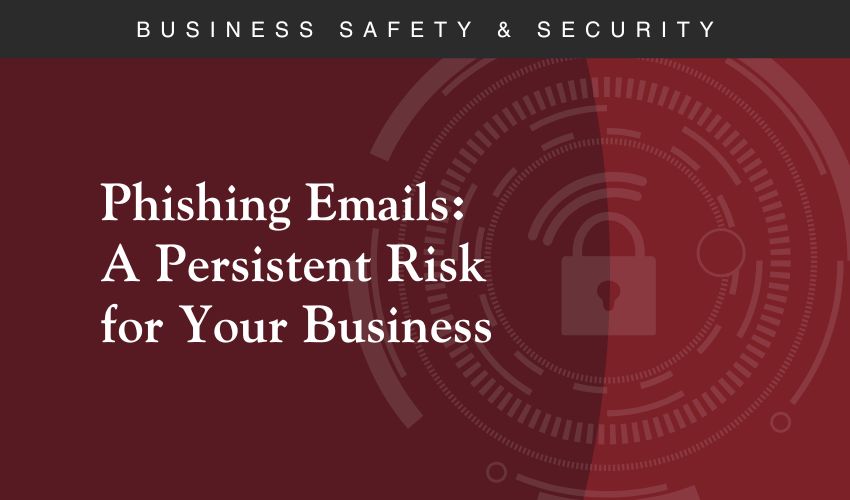
Phishing Emails: A Persistent Risk for Your Business
It goes without saying that email is essential for running a business—but it’s also one of the most common entry points for cybercriminals. Phishing emails are designed to trick you or your employees into revealing sensitive information, clicking malicious links, or downloading harmful attachments.
At Monson Savings Bank, we’re committed to helping businesses stay secure. Here’s how to recognize phishing emails before they put your company at risk.
What Is a Phishing Email?
A phishing email is a fraudulent message that appears to come from a trusted source—like a bank, vendor, or even a coworker. The goal? To steal login credentials, financial information, or install malware on your systems.
Red Flags to Watch For
Here are the most common signs that an email might be a phishing attempt:
1. Urgent or Threatening Language: Phishing emails often create a false sense of urgency:
- “Your account will be suspended unless you act now!”
- “Unusual login detected—verify immediately!”
Legitimate organizations rarely demand immediate action via email.
2. Suspicious Sender Address: The sender’s name might look familiar, but the email address is slightly off:
- [email protected] instead of @yourbusiness.com
Always double-check the full email address, not just the display name.
3. Generic Greetings: Phishing emails often use vague salutations:
- “Dear Customer” or “Hello User”
Legitimate businesses usually address you by name.
4. Unexpected Attachments or Links: If you weren’t expecting a file or link, don’t click it. These can contain malware or lead to fake login pages.
Hover over links to preview the URL before clicking.
5. Spelling and Grammar Errors: Many phishing emails contain awkward phrasing or typos—an easy giveaway.
Professional organizations typically proofread their communications.
How to Protect Your Business
- Train Your Team: Regularly educate employees on how to spot phishing attempts and what to do if they receive one.
- Use Email Filters and Security Tools: Invest in spam filters, antivirus software, and email authentication protocols like SPF, DKIM, and DMARC.
- Verify Before You Click: If something feels off, call the sender directly using a known phone number—not the one in the email.
- Report Suspicious Emails: Encourage your team to report phishing attempts to your IT department or email provider.
What to Do If You Clicked a Phishing Link
- Disconnect from the internet immediately
- Notify your IT team or service provider
- Change your passwords
- Monitor accounts for suspicious activity
- Report the incident to your bank and law enforcement if necessary
Monson Savings Bank Is Here to Help
At Monson Savings Bank, we’re here to help you stay one step ahead. We offer secure digital banking tools, fraud detection services, and personalized support to help protect your business. If you ever suspect fraud or need guidance, reach out to your business banking team.
Visit our Business Security Center for more information on how to protect your business.
This blog post is for informational purposes only and does not constitute legal, financial, or cybersecurity advice. Businesses should consult with qualified professionals for guidance specific to their operations and risk profile. Monson Savings Bank is not responsible for any losses resulting from the use of this information.


